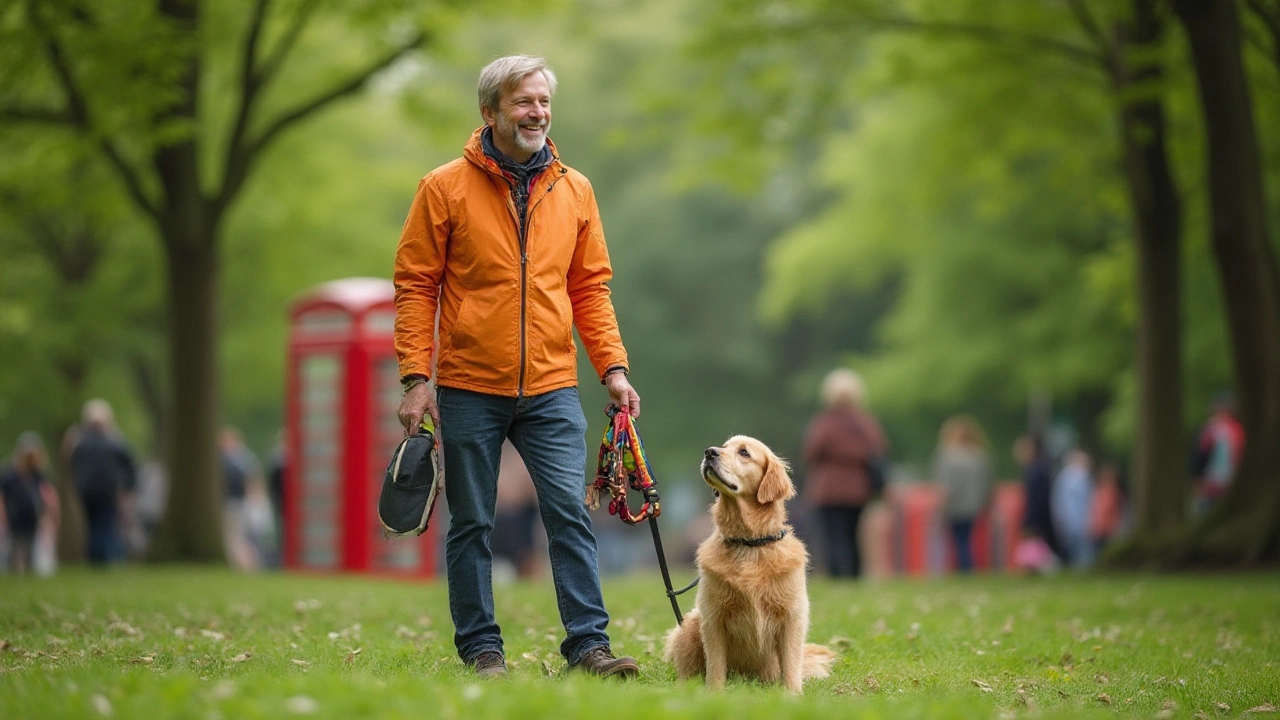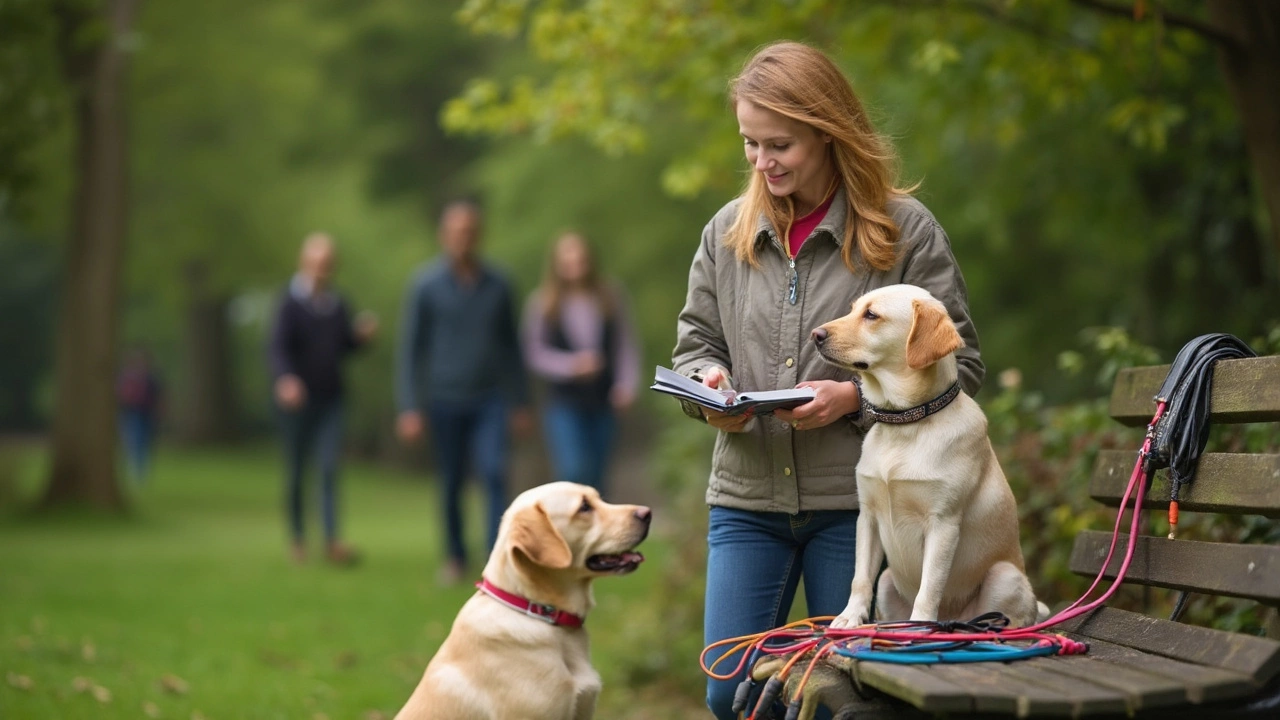Dog Training: Real‑World Tips for a Well‑Behaved Companion
If you’ve ever tried to teach your dog to sit and ended up with a tangled mess of leashes, you’re not alone. Training isn’t magic – it’s about clear communication, consistency, and a bit of patience. Below you’ll find straightforward steps you can use straight away, whether you’re dealing with a hyper‑barker, a nipping pup, or just want a reliable recall.
Start With the Basics: Sit, Stay, Come
The three commands that form the foundation of any training program are sit, stay and come. Grab a few treats, get down to your dog’s level and hold the treat just above the nose. As your dog lifts its head to follow the scent, its rear will naturally lower – that’s the sit. Say the word “Sit”, give the treat, and praise. Repeat 5‑10 times a day for a week.
For stay, ask for a sit first, then place an open palm toward the dog and say “Stay”. Take a step back, then return and reward. Increase distance and time gradually; if the dog breaks the stay, calmly bring it back to the original spot and start over. The come command saves lives – use a happy tone and a long leash. When your dog returns, reward with a high‑value treat and enthusiastic praise.
Dealing With Common Problems
Barking can be annoying, but most dogs bark to protect territory or get attention. Identify the trigger – a passerby, a doorbell, or boredom. When a bark starts, wait for a pause, then say “Quiet” and reward the silence. Consistency beats volume; don’t shout, as that just adds excitement.
Nibbling and biting are normal puppy behaviors. Teach bite inhibition by letting out a short “Ow!” when the bite hurts, then stop play for a few seconds. The pause signals that play ends when they’re too rough. Over time the puppy learns a softer mouth.
If you’re tempted to use a training collar, think carefully. Shock collars are controversial and can cause fear. Safer options include a gentle “shake‑to‑stop” collar that vibrates. Many trainers recommend plain flat collars combined with positive reinforcement – rewarding the behavior you want instead of punishing the one you don’t.
For dogs that pull on the leash, a front‑clip harness can redirect pulling without choking. Pair the harness with a “walk beside me” cue, rewarding every few steps the dog stays close. The aim is to make walking together enjoyable, not a battle of wills.
Lastly, remember that short, frequent sessions beat marathon drills. Five minutes, three times a day keeps your dog’s attention high and prevents burnout. End each session on a positive note – a treat, a game of fetch, or a belly rub – so your dog looks forward to the next round.
Training is a two‑way street. While you teach commands, watch your dog’s body language. A wagging tail, relaxed ears, and a soft gaze mean they’re ready to learn. If they’re stiff or avoiding eye contact, give them a break.
With these simple steps, you’ll see progress faster than you think. Stick with it, stay upbeat, and soon your dog will respond without hesitation – making walks, playtime, and everyday life smoother for both of you.
- Morgan Ainsworth
- 0 Comments
Understanding the 7‑7‑7 Rule for Dog Training
Learn the 7‑7‑7 rule for dog training: seven minutes, seven commands, seven days of consistent practice. Get step‑by‑step sessions, tips, pitfalls, and a progress log.
View More- Morgan Ainsworth
- 0 Comments
Should My Dog Wear a Collar and Harness Together? Safe Walking Tips Explained
Confused about whether your dog should wear both a collar and a harness? Get clear, practical pros, cons, and tips for safer dog walks right here.
View More- Morgan Ainsworth
- 0 Comments
Cesar Millan on Prong Collars: What You Need to Know
Curious about Cesar Millan’s take on prong collars? This article breaks down his thoughts, how he actually uses them, and what you should keep in mind if you’re considering one. Get practical advice and real-world tips to help you decide whether a prong collar fits your dog and training style. Learn when they can work, where things can go wrong, and what alternatives are out there. Know the facts before making a choice for your pup.
View More- Morgan Ainsworth
- 0 Comments
What Age Should a Dog Be Trained? Tips & Facts
Training a dog can seem like a daunting task, but knowing the right age to start makes a huge difference. Puppies can begin learning as early as eight weeks, as their brains are growing and receptive to new experiences. Older dogs can also be trained, but patience and consistency are key. From basic commands to advanced tricks, understanding your dog's developmental stages will help you tailor a training approach that works best for any age. This guide offers practical tips and intriguing facts about why timing matters when training your furry friend.
View More- Morgan Ainsworth
- 0 Comments
Where Should a Puppy Sleep at Night? Tips for a Peaceful Snooze
Discover the best sleeping arrangements for your puppy to ensure a restful night for both of you. Learn about crate training, the benefits of a comfortable bed, and how location impacts your puppy's sleep. Explore tips to create a soothing bedtime routine that helps your pup feel secure and relaxed.
View More- Morgan Ainsworth
- 0 Comments
Do Veterinarians Advocate the Use of Prong Collars for Dogs?
Prong collars are a contentious tool used in dog training. The veterinary community is divided in its stance, with some advocating for their use under professional guidance, while others warn about potential harm to a dog's physical and emotional well-being. This article explores the roles of prong collars, how they are viewed by veterinarians, and provides guidance on safe and effective dog collar options.
View More- Morgan Ainsworth
- 0 Comments
The Hidden Dangers of Shock Collars for Dogs: A Humane Approach to Training
Shock collars, often marketed as effective training tools, pose significant risks to a dog's emotional and physical well-being. They rely on inflicting pain, leading to increased anxiety and aggression, which counteracts positive training outcomes. By exploring ethical and stress-free alternatives, dog owners can build stronger relationships with their furry companions. The article delves into the psychology of dogs, humane training methods, and debunks common myths associated with shock collars.
View More






